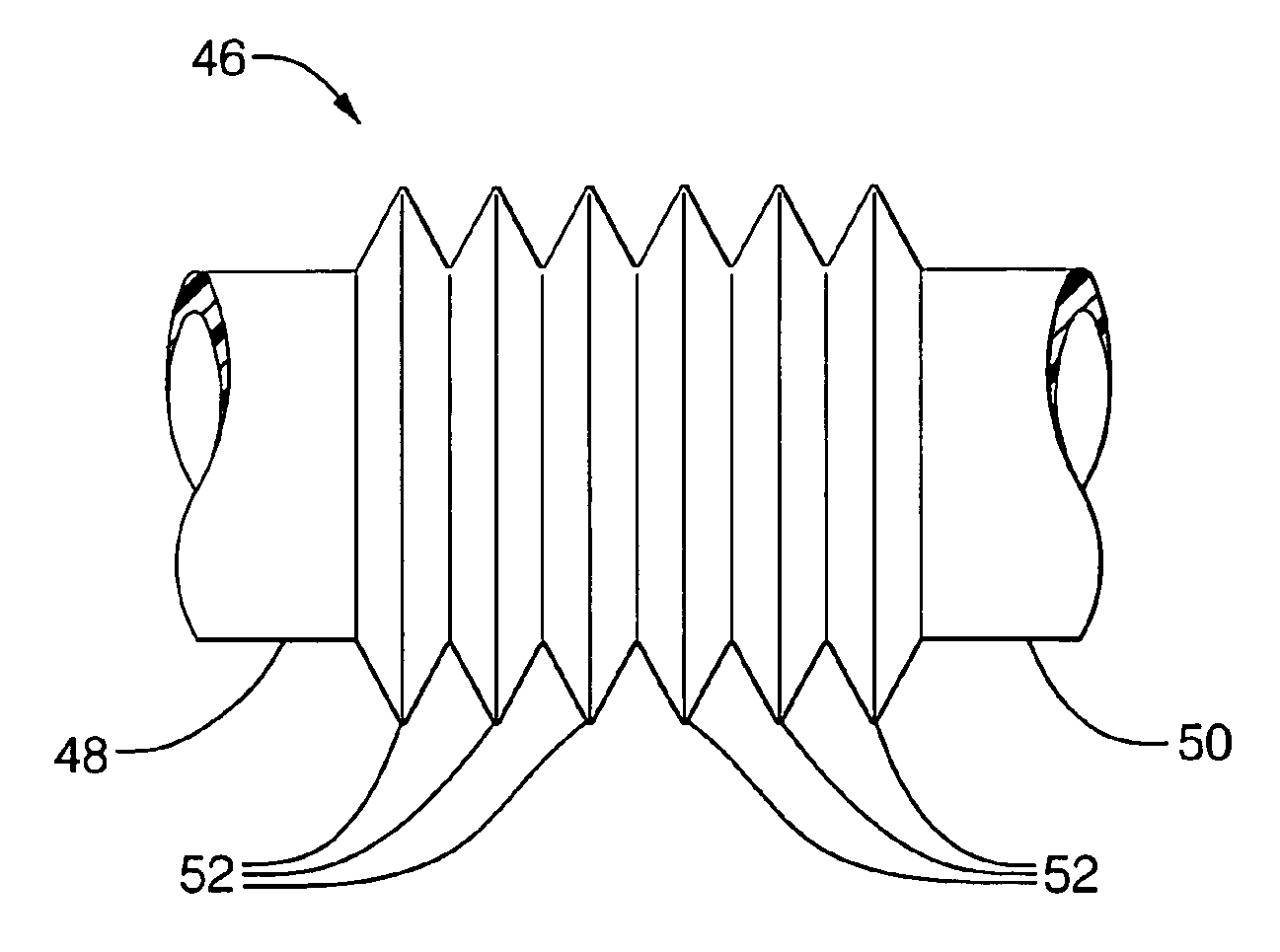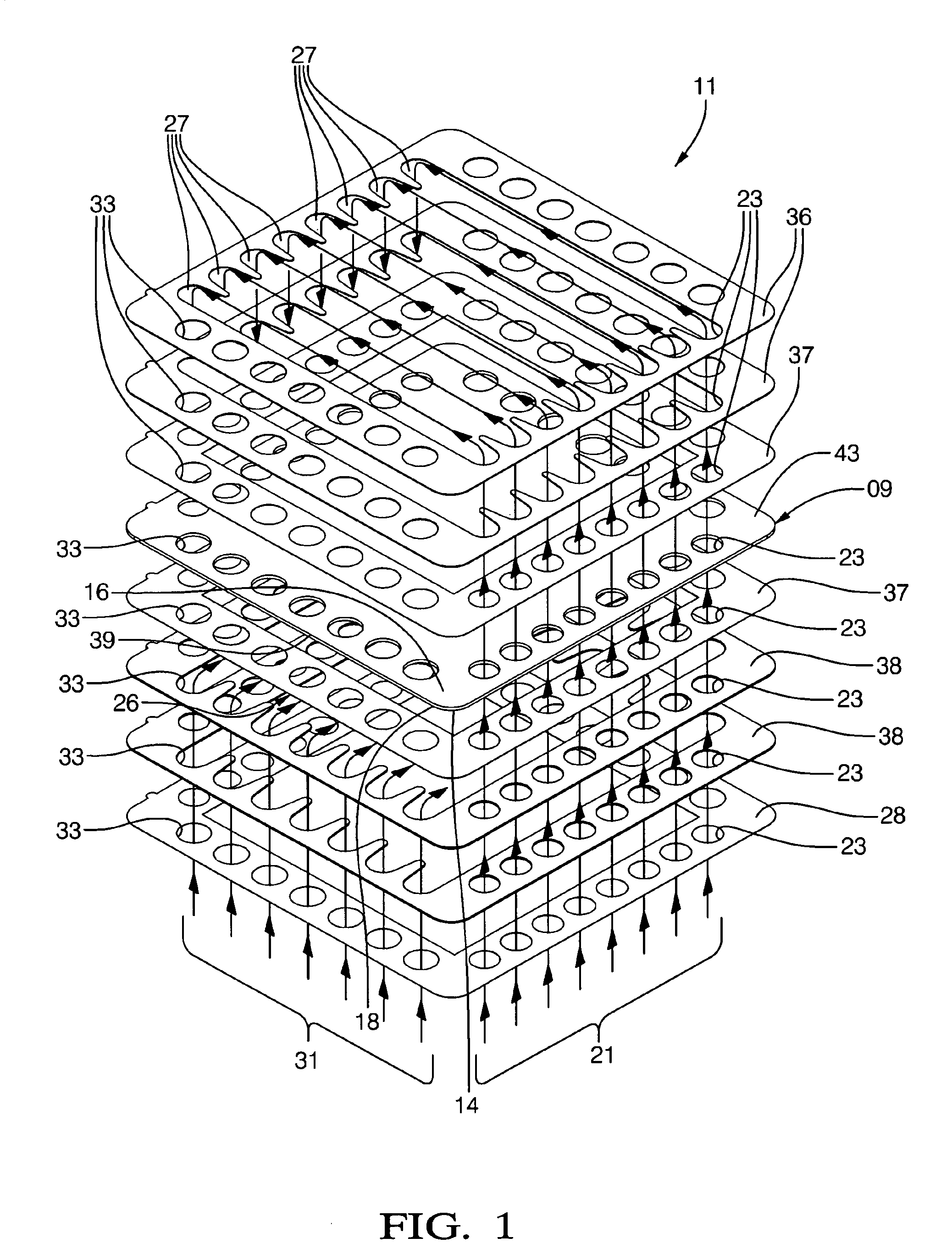Thermal and vibrational break for high-temperature gas tubes in a solid-oxide fuel cell
a fuel cell and gas tube technology, applied in the direction of cell components, cell component details, electrochemical generators, etc., can solve the problems of failure of the assembly or system, failure of the tube, etc., and achieve the effect of increasing the reliability and working life of the sofc assembly
- Summary
- Abstract
- Description
- Claims
- Application Information
AI Technical Summary
Benefits of technology
Problems solved by technology
Method used
Image
Examples
Embodiment Construction
[0018]FIGS. 1 through 3 are useful in describing generally the structure of a multiple fuel cell stack assembly. FIGS. 4 and 5 are illustrative of improved fuel cell assemblies in accordance with the invention.
[0019]Referring to FIGS. 1 and 2, an individual fuel cell 11 includes a multilayer fuel cell element 09 comprising an electrolyte 14 (E) having an anode 16 or positive element (P) deposited on a first surface thereof and a cathode 18 or negative element (N) deposited on a second surface thereof. Thus, element 09, which is the actual “fuel cell,” is known in the art by the acronym PEN. Passage 24 for flow of fuel 21 across the free surface 20 of anode 16 is provided by first cut-out spacers 36 sealed to anode 16 by peripheral seal 37, and passage 26 for flow of air 31 across the free surface of cathode 18 is provided by second cut-out spacers 38 sealed to cathode 18 by another peripheral seal 37. Fuel 21, typically in the form of hydrogen or reformate gas, is provided at a firs...
PUM
 Login to View More
Login to View More Abstract
Description
Claims
Application Information
 Login to View More
Login to View More - R&D
- Intellectual Property
- Life Sciences
- Materials
- Tech Scout
- Unparalleled Data Quality
- Higher Quality Content
- 60% Fewer Hallucinations
Browse by: Latest US Patents, China's latest patents, Technical Efficacy Thesaurus, Application Domain, Technology Topic, Popular Technical Reports.
© 2025 PatSnap. All rights reserved.Legal|Privacy policy|Modern Slavery Act Transparency Statement|Sitemap|About US| Contact US: help@patsnap.com



